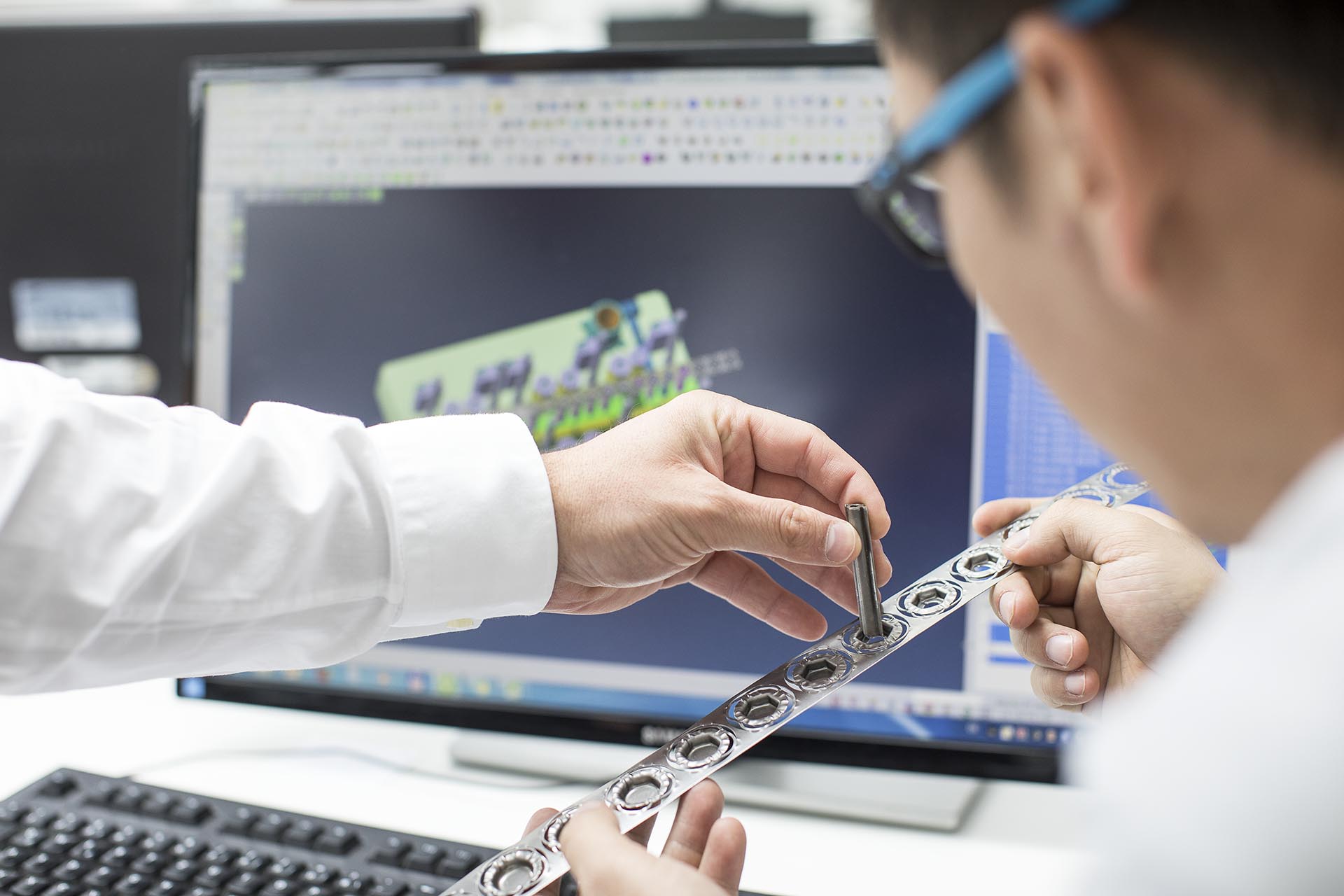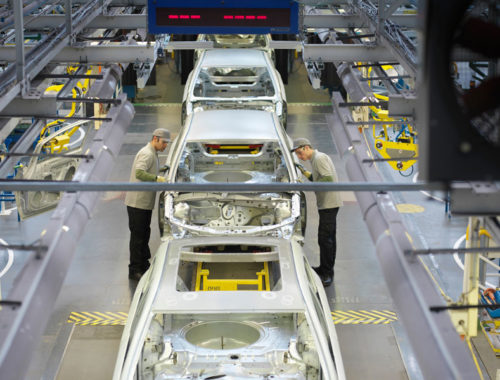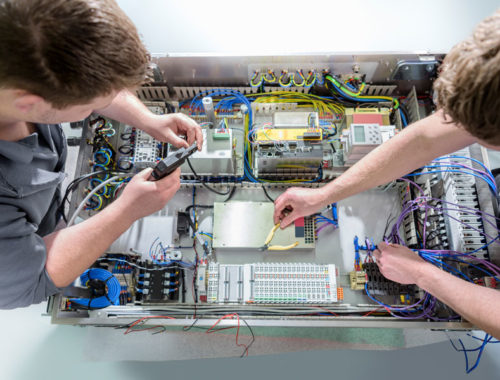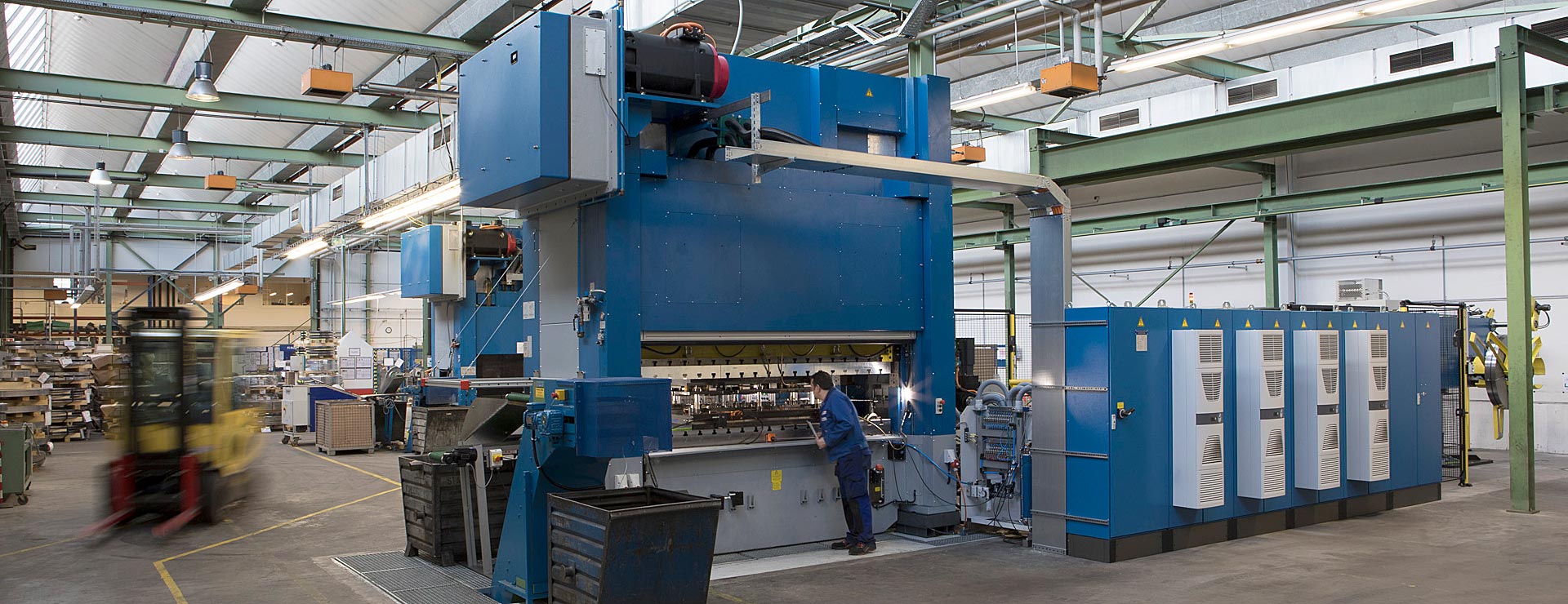
Progressive die-stamping
What appears to be the simplest thing from the outside often requires the most expertise. This applies to development as well as production. Progressive tools combine the very different technical processes from the areas of conversion and pressing techniques. But progressive die-stamping is more than just simply combining two techniques.
It’s because precisely when several procedures and processes have to take place progressively, the individual tools must work precisely and all the production steps must be geared perfectly to each other. Only in this way can the highest quality of the component be guaranteed reliably as an end-product.
The requirements of the tool and the machines are therefore correspondingly high. Progressive processes require:
-
Precise stamping depths
-
Very tight stamping tolerance
-
Absolutely precise arrangement of guide pins
-
High repeatability accuracy
-
Precise bending angles
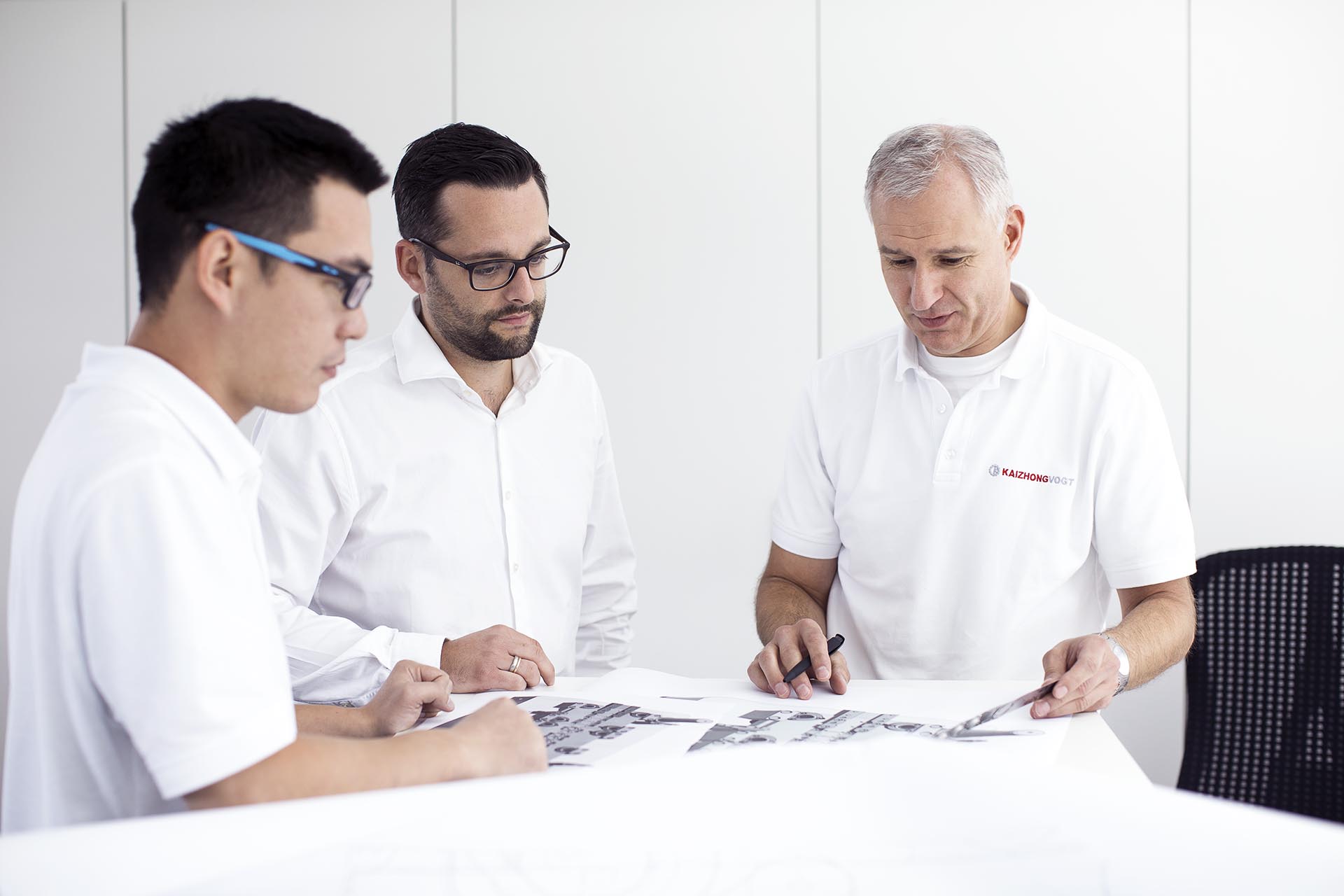
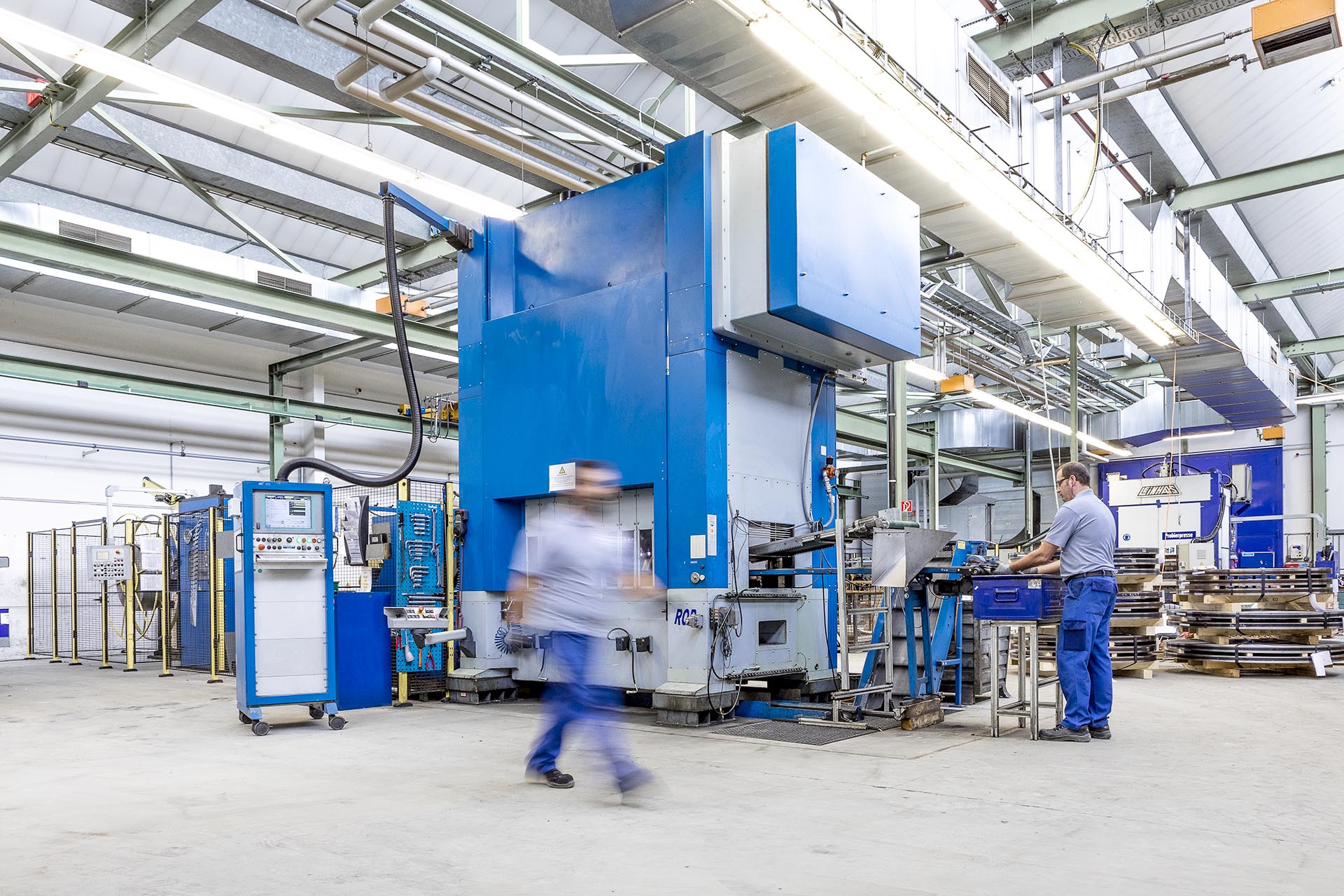
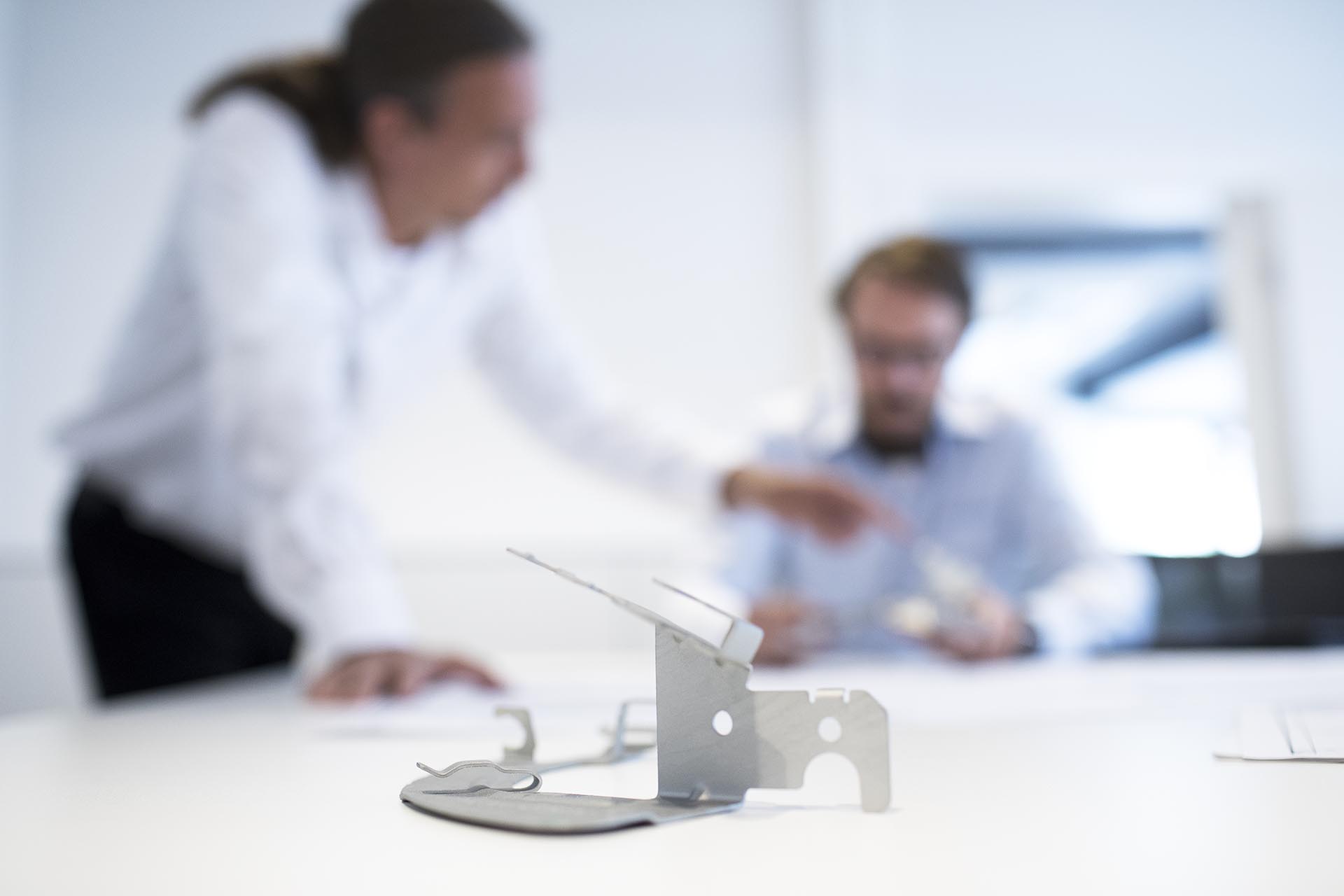
The procedure and set-up of the progressive tool
Progressive die-stamping is ideal for the processing and manufacturing of very complex metal parts in high numbers of units. The combination of the processes of cutting, bending, embossing and conversion in several work steps enables us at Kaizhong Vogt to process large quantities of metal coils quickly and if necessary cost-effectively for you.
These aspects, also with regard to the cost-effectiveness of production, lead to a broad spectrum of areas of application. Progressive tools are above all used in large-scale manufacturing industries such as the automobile, electronic or household appliance industry to keep the component costs as low as possible.
Several stations and processes are arranged after each other during progressive die-stamping, which leads to one or more operations on the component per station. The metal strip is wound from one coil at the start, flattened and fed into the progressive tool. The metal is then sequentially processed into the tool itself with a previously determined feed length, i.e. the individual process stages are stipulated.
Work processes take place in the following work stages step by step for example:
-
Perforating
-
Tapering
-
Die-stamping
-
Bending
-
Embossing
-
Conversion
The component is transported by the carrier strip from station to station. At the end of the last step, the tool is either separated from the carrier strip or the band is wound up again for another work process.
Cost-effectiveness as a major factor – Development phase as a means to reduce costs
Whenever the number of units, size and requirements of the product allows us to, we use progressive tools at Kaizhong Vogt. This is because this procedure has many benefits for you as the customer and for us as the service-provider. Standardised tool set-up, low set-up costs and fast throughput times compared with other processes make progressive die-stamping the perfect tool for orders to process small and large metal parts.
Decades of experience and modern machinery – We implement your ideas from metal and sheet metal and make them a reality. By using the latest technology such as CAD technologies, we are able to simulate processes prior to production.
This provides us with important impressions of the cost-effectiveness of the processes so that we can optimise them if necessary. Together with you, we will test all the processes with regard to major requirements such as tolerances, fit, measurements or forces having an effect on the materials so that errors can already be ruled out at the planning stage.
The aim for us as your partner is to combine as many work tasks as possible in one tool already at the planning phase. This will further reduce the following manufacturing expenses and therefore you will be able to achieve considerable cost reductions as the contractor.
If you are interested in collaboration, please contact us so that we can stand at your side during the next stages from advice to the end-production of the finished product.
